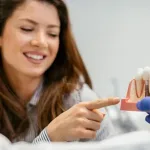Breaking Barriers: 5 Bold Strategies to Transform Chemotherapy Treatment for the Elderly – Latest Insights of the Year

Introduction
Brief overview of chemotherapy treatment for the elderly
Chemotherapy treatment for the elderly involves the use of powerful drugs to combat cancer cells, a medical approach that poses unique challenges in this age group. As individuals age, factors such as changes in metabolism and diminished organ function impact the effectiveness of chemotherapy. The elderly are also more susceptible to side effects, making it essential to carefully tailor treatment plans. Despite these challenges, advancements in personalized regimens and targeted therapies hold promise for improving outcomes, offering a glimpse of hope in transforming the landscape of chemotherapy for older individuals.
In the realm of transforming chemotherapy treatment for the elderly, it is crucial to acknowledge the distinct challenges faced by older adults (aged 65 and above) undergoing this common cancer therapy. Firstly, older individuals often exhibit stronger reactions and prolonged recovery times post-chemotherapy due to factors such as coexisting health conditions, potential medication interactions, bone marrow changes, and other physical alterations associated with aging. These intricacies highlight the need for tailored approaches to address the specific needs of elderly patients during chemotherapy.
To optimize outcomes for older adults, personalized strategies are essential. These include crafting individualized treatment plans that consider overall health, existing conditions, and concurrent medication use. Providing comprehensive supportive care to manage side effects and maintaining a high quality of life is paramount. Regular monitoring and collaboration among a multidisciplinary team, involving oncologists, geriatricians, and pharmacists, contribute to a holistic approach in optimizing care for elderly patients undergoing chemotherapy.
While chemotherapy poses its challenges, it remains a valuable treatment option for patients of all ages. By understanding and proactively addressing the unique needs of older adults, we can break barriers and enhance their overall cancer care experience. For more in-depth insights, readers can explore the detailed article on how chemotherapy affects individuals aged 65 and older on Cancer.Net.
Understanding the Challenges
What are the factors that can influence the effectiveness of chemotherapy?

When considering chemotherapy efficacy in older adults, several age-related factors significantly influence treatment outcomes. Physiological changes, such as slowed metabolism, impact how the body processes chemotherapy drugs, potentially leading to prolonged exposure and toxicity. Aging-related alterations in organ function, especially in the liver, kidneys, and bone marrow, play a pivotal role in drug metabolism, excretion, and blood cell production, influencing chemotherapy-induced complications like anemia and thrombocytopenia.
Comorbidities further complicate chemotherapy in older individuals, with conditions like cardiovascular diseases, diabetes, and respiratory disorders interacting with treatment safety and tolerance. Frailty and impaired functional status in older adults contribute to increased vulnerability to chemotherapy toxicity, emphasizing the importance of personalized treatment plans. Psychosocial factors, including depression, anxiety, and social support, play a role in treatment adherence and overall outcomes. Polypharmacy and the presence of multiple medications raise the risk of drug interactions, affecting chemotherapy efficacy or intensifying side effects. Lastly, understanding the treatment goals, whether curative or palliative, is crucial, as older adults may prioritize quality of life over aggressive treatment.
In short, optimizing chemotherapy outcomes in older adults demands personalized approaches, meticulous monitoring, and collaboration among oncologists, geriatricians, and pharmacists. Recognizing and addressing these age-related factors ensures safer and more effective cancer treatment for the elderly.
Q: Are there specific considerations for older individuals undergoing cancer treatment?
Answer: Yes, older individuals may experience unique challenges during cancer treatment, including age-related factors affecting treatment outcomes and potential interactions with existing health conditions.
Q: Why is a multidisciplinary approach essential in cancer care for the elderly?
Answer: A multidisciplinary approach involving oncologists, geriatricians, and caregivers is crucial as it ensures a comprehensive understanding of the complex interplay between cancer and aging, leading to more personalized and holistic care.
Q: How can communication between healthcare professionals and elderly patients be improved?
Answer: Improving communication involves using clear language, establishing trust through empathy and active listening, utilizing various communication channels, and prioritizing ongoing dialogue to enhance understanding and collaboration in healthcare decisions.
Q: What role do practical assistance and nutritional guidance play in supporting elderly patients facing cancer?
Answer: Practical assistance, including help with daily tasks, and nutritional guidance are essential in supporting overall well-being, managing side effects, and improving treatment outcomes for elderly patients undergoing cancer treatment.
Q: Is early detection and preventive care crucial for elderly patients facing potential health issues?
Answer: Yes, emphasizing the importance of routine screenings and preventive measures is crucial. Proactive communication from healthcare professionals can empower older individuals to prioritize their health, leading to early detection and intervention for potential medical issues.














